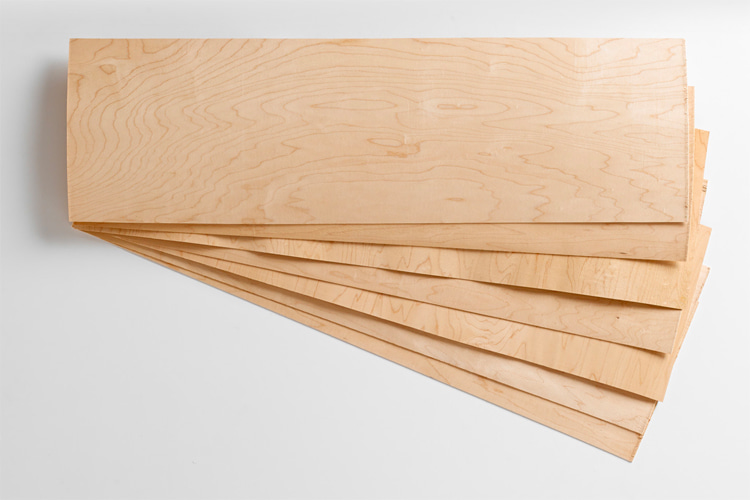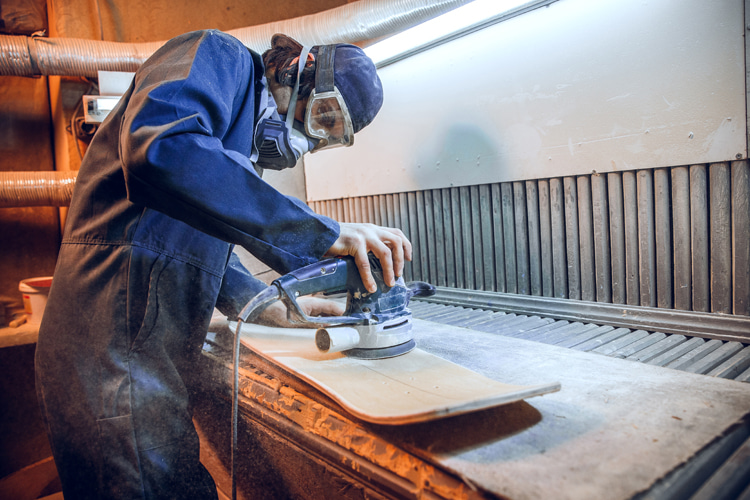A skateboard looks like a simple piece of equipment. However, the manufacturing process is quite complex. Here's how a skateboard deck gets ready to be ridden.
A skateboard deck is usually made of seven layers of wood glued together and shaped to form the flat, board-like structure used for skateboarding.
Making a skateboard deck involves several steps, including selecting the materials, choosing a template, cutting and shaping the wood, and applying graphics and finishes.
Nowadays, skateboards are mass-produced with automation processes and equipment like computer numerical control (CNC) machines.
A skateboard can still be hand-shaped, but it takes much more time.
Using high-quality materials and skilled technicians ensures that decks withstand the wear and tear of skateboarding while providing riders with the control and performance they need.
Here's a detailed explanation of each step involved in manufacturing skateboard decks.

Materials
Maple Veneer
The most common material used in skateboard decks is hard rock maple veneer.
It is usually sourced from forests in the northern United States and Canada and is known for its durability and strength.
Because it is sourced from cold climates, it makes the wood denser and more stable.
Other materials sometimes used for skateboard decks include bamboo, birch, and carbon fiber.
The veneer is made by peeling thin layers of wood from a log using a lathe, resulting in a thin, flexible sheet of wood.
Glue
A water-based adhesive is used to bond the seven layers of maple veneer together.
The adhesive must be strong enough to hold the layers together and flexible enough to allow the deck to flex during use.
Tools and Equipment
- CNC machine (to precisely cut and shape the wood for the deck);
- Hydraulic press (to apply pressure to the layers of wood as they are glued together, ensuring a strong bond between the layers);
- Bandsaw or jigsaw (to cut the deck to its final shape and size);
- Router (to add concave or a curve to the deck, which helps with board control);
- Belt sander (to sand down the edges of the deck after it has been cut, creating a smooth surface);
- Screen printing or heat transfer equipment (to add graphics and designs to the deck);
- Spray gun or paintbrush (to apply lacquer or other protective finishes to the deck);
Process
Once the skateboard deck template has been chosen, it's time to assemble the seven layers of maple veneer and give them their final shape.
- Cutting: The first step in making a skateboard deck is to cut the big maple veneer planks to the same size;
- Gluing: Once the veneer has been cut, the seven layers are glued together using a water-based adhesive;
- Stacking: The layers are stacked on top of each other, with the grain of each layer running in a different direction. This helps to add strength and stability to the deck;
- Pressing the Deck: After the veneer has been glued, the deck is placed in a hydraulic press. The press applies pressure to the deck, compressing the layers of maple veneer and shaping the deck into the desired shape. The pressure and temperature used do matter, as they will ensure that the layers are firmly bonded together;
- Shaping: The next step in manufacturing a skateboard deck is to cut and shape the wood. This is normally done using a CNC machine, which uses computer-aided design (CAD) software to cut and shape the wood with high precision;
- Fine Sanding: The deck edges are then sanded down to remove any rough spots or edges;
- Sealing: The deck is then coated with a lacquer/sealant or other protective finish to bring the wood colors out;
- Finishing: The final step is to add graphics and finishes to the skateboard deck. This is typically done using screen printing or heat press methods, allowing high-quality graphics to be added to the deck. Skateboard decks can also be customized using various techniques, such as laser etching, embossing, and engraving. Some manufacturers also offer custom graphics and finishes for their decks;
